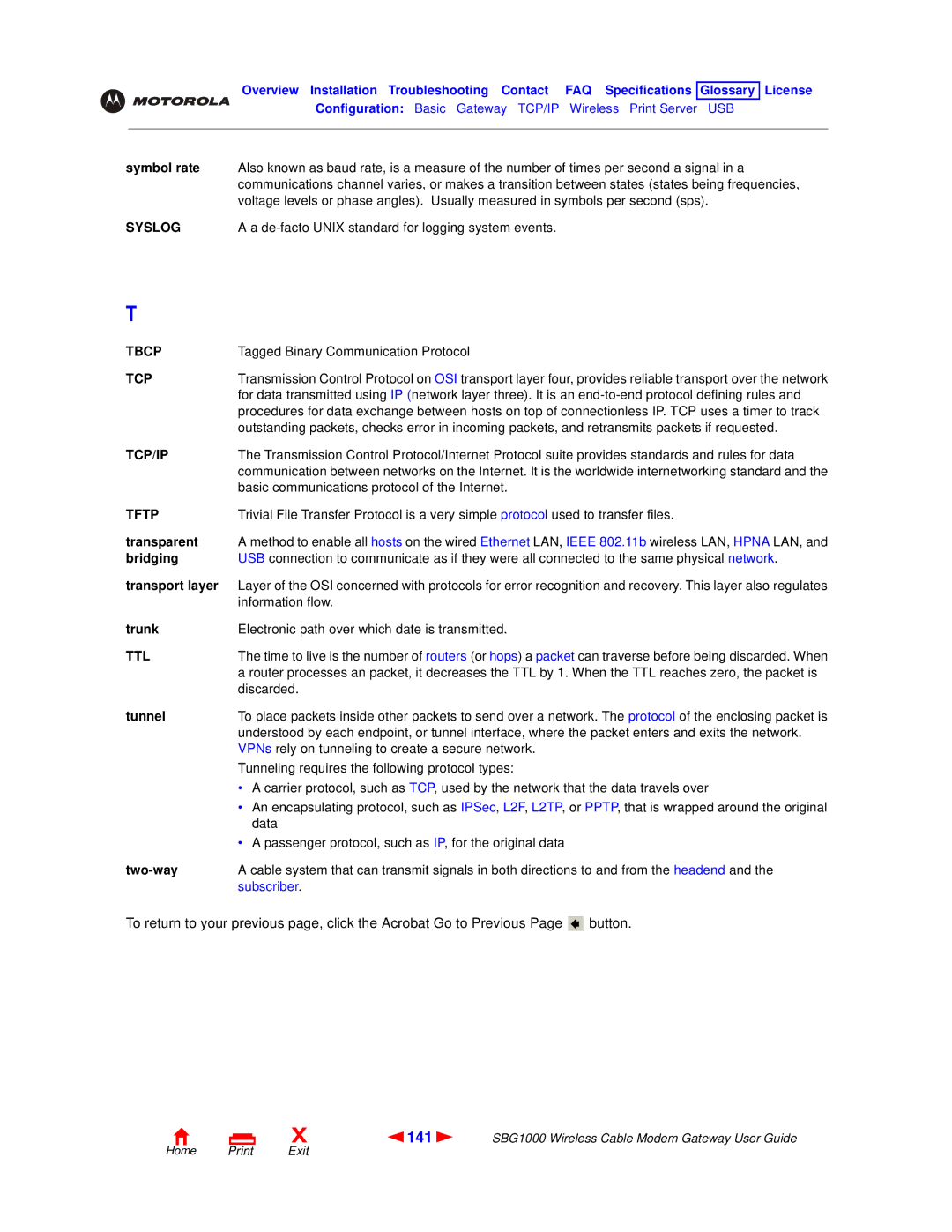
Overview Installation Troubleshooting Contact FAQ Specifications Glossary License
Configuration: Basic Gateway TCP/IP Wireless Print Server USB
symbol rate Also known as baud rate, is a measure of the number of times per second a signal in a communications channel varies, or makes a transition between states (states being frequencies, voltage levels or phase angles). Usually measured in symbols per second (sps).
SYSLOG | A a |
T
TBCP | Tagged Binary Communication Protocol |
TCP | Transmission Control Protocol on OSI transport layer four, provides reliable transport over the network |
| for data transmitted using IP (network layer three). It is an |
| procedures for data exchange between hosts on top of connectionless IP. TCP uses a timer to track |
| outstanding packets, checks error in incoming packets, and retransmits packets if requested. |
TCP/IP | The Transmission Control Protocol/Internet Protocol suite provides standards and rules for data |
| communication between networks on the Internet. It is the worldwide internetworking standard and the |
| basic communications protocol of the Internet. |
TFTP | Trivial File Transfer Protocol is a very simple protocol used to transfer files. |
transparent | A method to enable all hosts on the wired Ethernet LAN, IEEE 802.11b wireless LAN, HPNA LAN, and |
bridging | USB connection to communicate as if they were all connected to the same physical network. |
transport layer | Layer of the OSI concerned with protocols for error recognition and recovery. This layer also regulates |
| information flow. |
trunk | Electronic path over which date is transmitted. |
TTL | The time to live is the number of routers (or hops) a packet can traverse before being discarded. When |
| a router processes an packet, it decreases the TTL by 1. When the TTL reaches zero, the packet is |
| discarded. |
tunnel | To place packets inside other packets to send over a network. The protocol of the enclosing packet is |
| understood by each endpoint, or tunnel interface, where the packet enters and exits the network. |
| VPNs rely on tunneling to create a secure network. |
| Tunneling requires the following protocol types: |
| • A carrier protocol, such as TCP, used by the network that the data travels over |
| • An encapsulating protocol, such as IPSec, L2F, L2TP, or PPTP, that is wrapped around the original |
| data |
| • A passenger protocol, such as IP, for the original data |
| A cable system that can transmit signals in both directions to and from the headend and the |
| subscriber. |
To return to your previous page, click the Acrobat Go to Previous Page ![]() button.
button.
X | 141 | SBG1000 Wireless Cable Modem Gateway User Guide |
